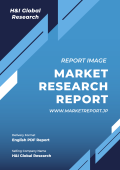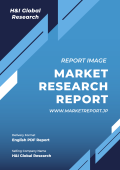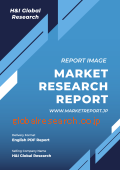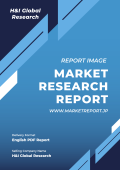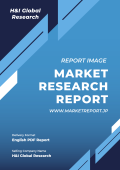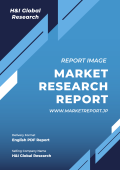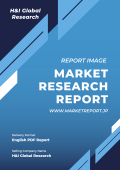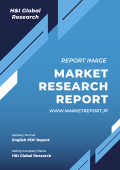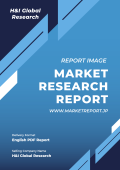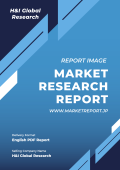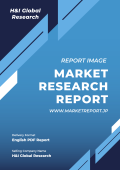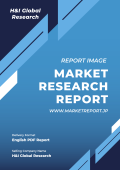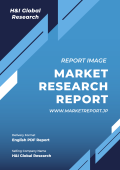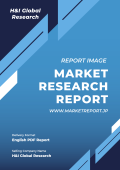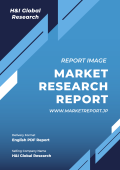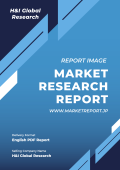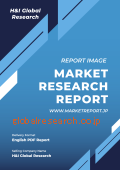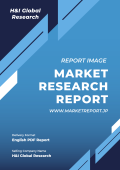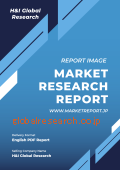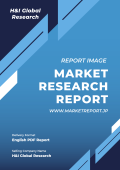世界の医薬品分析試験アウトソーシング市場規模は、2024年に90億米ドルに達しました。IMARC Groupは、2033年までに市場規模が159億米ドルに達し、2025年から2033年の年間平均成長率(CAGR)は6.49%になると予測しています。市場は、リポソーム、ナノ粒子、マイクロスフェアなどの新しい薬物送達システムへの注目が高まっていること、がん、糖尿病、心血管疾患などの慢性疾患の有病率が増加していること、そして医薬品開発への重点がますます高まっていることによって牽引されています。
医薬品分析試験アウトソーシングとは、医薬品業界において、業務の一部を第三者に委託することで社内生産コストを最小限に抑えるために行われる試験活動です。医薬品分析試験アウトソーシングサービスは、医薬品開発業務受託機関(CRO)の延長として、社内分析開発および試験の大部分を代替するようになっています。医薬品および治療薬の開発プロセスにおいて、医薬品試験は、製品化に至るまで、その初期段階から重要な役割を果たします。これには、化学物質の構造の決定、物質混合物の精製、活性医薬成分(API)の合成と特性評価が含まれます。 化合物の活性を促進するための取り組みとして、通常、製剤開発と初期段階の製造が関与します。
医薬品分析試験アウトソーシング市場の動向:
この市場は、製薬会社、医薬品開発業務受託機関(CRO)、バイオテクノロジー企業におけるアウトソーシング慣行の採用増加によって主に牽引されています。これは、さまざまな規制当局による医薬品開発の全工程に関する分析情報の需要の高まりが要因となっています。さらに、製品ライフサイクルの短縮に重点を置いた継続的な技術進歩により、新製品が急速に開発されるようになり、これが市場を後押ししています。製品の安全性と品質に対するニーズの高まり、生体内および生体外試験に関する規制の変更、カスタマイズされたケアへの重点の強化も、市場に好影響を与えています。複合製品、バイオシミラー、その他の革新的な医薬品の開発により、特定の種類の試験や専門性の高い製品製造が導入され、市場はさらに活性化しています。市場に貢献するその他の要因としては、製薬業界における数多くのイノベーション、アウトソーシングの価格メリット、持続可能な医薬品開発のための広範な研究開発(R&D)、複数の国々による好ましい取り組み、臨床試験登録件数の増加などが挙げられます。
主な市場区分:
IMARC Groupは、世界の医薬品分析試験アウトソーシング市場レポートの各サブセグメントにおける主要なトレンドの分析を提供しており、2025年から2033年までの世界、地域、国レベルでの予測も行っています。当社のレポートでは、種類、サービス、エンドユーザーに基づいて市場を分類しています。
種類別内訳:
医薬品有効成分(API)
添加物
完成品
サービス別内訳:
バイオ分析試験
臨床
非臨床
方法開発およびバリデーション
抽出可能および溶出可能
不純物方法
技術コンサルティング
その他
安定性試験
原薬
安定性表示方法バリデーション
加速安定性試験
光安定性試験
その他
その他
エンドユーザー別内訳:
製薬会社
バイオ製薬会社
医薬品開発業務受託機関
地域別内訳:
北米
米国
カナダ
アジア太平洋地域
中国
日本
インド
韓国
オーストラリア
インドネシア
その他
ヨーロッパ
ドイツ
フランス
イギリス
イタリア
スペイン
ロシア
その他
ラテンアメリカ
ブラジル
メキシコ
その他
中東およびアフリカ
競合状況:
業界の競合状況も、主要企業のプロファイルとともに調査されました。主要企業には、Ajinomoto Bio-Pharma Services (味の素株式会社)、Alcami Corporation Inc.、Boston Analytical Inc.、Catalent Inc.、Charles River Laboratories International Inc.、Eurofins Scientific SE、Intertek Group plc、Laboratory Corporation of America Holdings、Pace Analytical Services LLC、SGS S. A.、Thermo Fisher Scientific Inc.、West Pharmaceutical Services Inc.、WuXi AppTec Inc. なお、これは企業の一部のリストであり、完全なリストは報告書に記載されています。
世界の医薬品分析試験アウトソーシング市場規模は、2024年には90億米ドルに達しました。IMARC Groupは、この市場が2033年までに159億米ドルに達し、2025年から2033年の年間平均成長率(CAGR)は6.49%になると予測しています。この市場は、リポソーム、ナノ粒子、マイクロスフェアなどの新しい薬物送達システムへの注目が高まっていること、がん、糖尿病、心血管疾患などの慢性疾患の有病率が増加していること、そして医薬品開発への重点がますます高まっていることによって牽引されています。
医薬品分析試験アウトソーシングとは、医薬品業界において、業務の一部を第三者に委託することで社内生産コストを最小限に抑えるために行われる試験活動です。医薬品分析試験アウトソーシングサービスは、医薬品開発業務受託機関(CRO)の延長として、社内分析開発および試験の大部分を代替するようになっています。医薬品および治療薬の開発プロセスにおいて、医薬品試験は、製品化に至るまで、その初期段階から重要な役割を果たします。これには、化学物質の構造の決定、物質混合物の精製、活性医薬成分(API)の合成と特性評価が含まれます。 化合物の活性を促進するための取り組みとして、通常、製剤開発と初期段階の製造が関与します。
医薬品分析試験アウトソーシング市場の動向:
この市場は、製薬会社、医薬品開発業務受託機関(CRO)、バイオテクノロジー企業におけるアウトソーシング慣行の採用増加によって主に牽引されています。これは、さまざまな規制当局による医薬品開発の全工程に関する分析情報の需要の高まりが要因となっています。さらに、製品ライフサイクルの短縮に重点を置いた継続的な技術進歩により、新製品が急速に開発されるようになり、これが市場を後押ししています。製品の安全性と品質に対するニーズの高まり、生体内および生体外試験に関する規制の変更、カスタマイズされたケアへの重点の強化も、市場に好影響を与えています。複合製品、バイオシミラー、その他の革新的な医薬品の開発により、特定の種類の試験や専門性の高い製品製造が導入され、市場はさらに活性化しています。市場に貢献するその他の要因としては、製薬業界における数多くのイノベーション、アウトソーシングの価格メリット、持続可能な医薬品開発のための広範な研究開発(R&D)、複数の国々による好ましい取り組み、臨床試験登録件数の増加などが挙げられます。
主な市場区分:
IMARC Groupは、世界の医薬品分析試験アウトソーシング市場レポートの各サブセグメントにおける主要なトレンドの分析を提供しており、2025年から2033年までの世界、地域、国レベルでの予測も行っています。当社のレポートでは、種類、サービス、エンドユーザーに基づいて市場を分類しています。
種類別内訳:
医薬品有効成分(API)
添加物
完成品
サービス別内訳:
バイオ分析試験
臨床
非臨床
方法開発およびバリデーション
抽出可能および溶出可能
不純物方法
技術コンサルティング
その他
安定性試験
原薬
安定性表示方法バリデーション
加速安定性試験
光安定性試験
その他
その他
エンドユーザー別内訳:
製薬会社
バイオ製薬会社
契約研究機関
地域別内訳:
北米
米国
カナダ
アジア太平洋地域
中国
日本
インド
韓国
オーストラリア
インドネシア
その他
ヨーロッパ
ドイツ
フランス
イギリス
イタリア
スペイン
ロシア
その他
ラテンアメリカ
ブラジル
メキシコ
その他
中東およびアフリカ
競合状況:
業界の競合状況も、主要企業のプロファイルとともに調査されています。主要企業には、Ajinomoto Bio-Pharma Services (Ajinomoto Co. Inc.), Alcami Corporation Inc., Boston Analytical Inc., Catalent Inc., Charles River Laboratories International Inc., Eurofins Scientific SE, Intertek Group plc, Laboratory Corporation of America Holdings, Pace Analytical Services LLC, SGS S.A., Thermo Fisher Scientific Inc., West Pharmaceutical Services Inc. and WuXi AppTec Inc.なお、これは企業リストの一部であり、完全なリストはレポートに記載されています。
このレポートで回答される主な質問:
世界の医薬品分析試験アウトソーシング市場はこれまでどのような実績を残しており、今後数年間でどのような実績を残すでしょうか?
COVID-19は世界の医薬品分析試験アウトソーシング市場にどのような影響を与えているでしょうか?
主な地域市場はどこでしょうか?
種類別の市場の内訳はどのようなものでしょうか?
サービス別の市場の内訳はどのようなものでしょうか?
エンドユーザー別の市場規模は?
業界のバリューチェーンにおけるさまざまな段階とは?
業界の主な推進要因と課題は?
世界の医薬品分析試験アウトソーシング市場の構造と主要企業は?
業界の競争の度合いは?
Pharmaceutical analytical testing outsourcing is a testing activity used in the pharmaceutical industry to minimize in-house production costs by outsourcing parts of the work to a third party. As an extension of contract research organizations, pharmaceutical analytical testing outsourcing services have begun replacing a significant portion of in-house analytical development and testing. As part of the development process for drugs and therapies, pharmaceutical testing plays a vital role from the beginning through the commercialization of the product. It entails determining the structures of chemicals, purifying a mixture of substances, and synthesizing and characterizing active medicinal ingredients (APIs). Formulation development and early-phase manufacturing are usually involved in this initiative to speed up compound activities.
Pharmaceutical Analytical Testing Outsourcing Market Trends:
The market is majorly driven by the increasing adoption of outsourcing practices in pharmaceutical companies, contract research organizations, and biotech companies. This can be attributed to the escalating demand for analytical information on the end-to-end process of drug development by various regulatory agencies. Additionally, continual technological advancements with an enhanced focus on shortening the product lifecycle have resulted in the rapid development of new products, which is providing an impetus to the market. The rising need for product safety and quality, changing regulations for in vivo and in vitro tests, and an augmented emphasis on customized care is also impacting the market positively. The development of combination products, biosimilar, and other innovative medicines leading to the introduction of specific types of tests and specialty product manufacturing are further fueling the market. Some of the other factors contributing to the market include numerous innovations in the pharmaceutical industry, the pricing benefits of outsourcing, extensive research and development (R&D) conducted to develop sustainable drugs, favorable initiatives by the governments of several countries, and the growing number of clinical trial registrations.
Key Market Segmentation:
IMARC Group provides an analysis of the key trends in each sub-segment of the global pharmaceutical analytical testing outsourcing market report, along with forecasts at the global, regional and country level from 2025-2033. Our report has categorized the market based on type, service and end user.
Breakup by Type:
Active Pharmaceutical Ingredients (API)
Additives
Finished Products
Breakup by Service:
Bioanalytical Testing
Clinical
Non-Clinical
Method Development and Validation
Extractable and Leachable
Impurity Method
Technical Consulting
Others
Stability Testing
Drug Substance
Stability Indicating Method Validation
Accelerated Stability Testing
Photostability Testing
Others
Others
Breakup by End User:
Pharmaceutical Companies
Biopharmaceutical Companies
Contract Research Organizations
Breakup by Region:
North America
United States
Canada
Asia-Pacific
China
Japan
India
South Korea
Australia
Indonesia
Others
Europe
Germany
France
United Kingdom
Italy
Spain
Russia
Others
Latin America
Brazil
Mexico
Others
Middle East and Africa
Competitive Landscape:
The competitive landscape of the industry has also been examined along with the profiles of the key players being Ajinomoto Bio-Pharma Services (Ajinomoto Co. Inc.), Alcami Corporation Inc., Boston Analytical Inc., Catalent Inc., Charles River Laboratories International Inc., Eurofins Scientific SE, Intertek Group plc, Laboratory Corporation of America Holdings, Pace Analytical Services LLC, SGS S.A., Thermo Fisher Scientific Inc., West Pharmaceutical Services Inc. and WuXi AppTec Inc. Kindly, note that this only represents a partial list of companies, and the complete list has been provided in the report.
The global pharmaceutical analytical testing outsourcing market size reached USD 9.0 Billion in 2024. Looking forward, IMARC Group expects the market to reach USD 15.9 Billion by 2033, exhibiting a growth rate (CAGR) of 6.49% during 2025-2033. The market is driven by the growing focus on new drug delivery systems, such as liposomes, nanoparticles, and microspheres, increasing prevalence of chronic diseases like cancer, diabetes, and cardiovascular disease, and rising emphasis on drug development.
Pharmaceutical analytical testing outsourcing is a testing activity used in the pharmaceutical industry to minimize in-house production costs by outsourcing parts of the work to a third party. As an extension of contract research organizations, pharmaceutical analytical testing outsourcing services have begun replacing a significant portion of in-house analytical development and testing. As part of the development process for drugs and therapies, pharmaceutical testing plays a vital role from the beginning through the commercialization of the product. It entails determining the structures of chemicals, purifying a mixture of substances, and synthesizing and characterizing active medicinal ingredients (APIs). Formulation development and early-phase manufacturing are usually involved in this initiative to speed up compound activities.
Pharmaceutical Analytical Testing Outsourcing Market Trends:
The market is majorly driven by the increasing adoption of outsourcing practices in pharmaceutical companies, contract research organizations, and biotech companies. This can be attributed to the escalating demand for analytical information on the end-to-end process of drug development by various regulatory agencies. Additionally, continual technological advancements with an enhanced focus on shortening the product lifecycle have resulted in the rapid development of new products, which is providing an impetus to the market. The rising need for product safety and quality, changing regulations for in vivo and in vitro tests, and an augmented emphasis on customized care is also impacting the market positively. The development of combination products, biosimilar, and other innovative medicines leading to the introduction of specific types of tests and specialty product manufacturing are further fueling the market. Some of the other factors contributing to the market include numerous innovations in the pharmaceutical industry, the pricing benefits of outsourcing, extensive research and development (R&D) conducted to develop sustainable drugs, favorable initiatives by the governments of several countries, and the growing number of clinical trial registrations.
Key Market Segmentation:
IMARC Group provides an analysis of the key trends in each sub-segment of the global pharmaceutical analytical testing outsourcing market report, along with forecasts at the global, regional and country level from 2025-2033. Our report has categorized the market based on type, service and end user.
Breakup by Type:
Active Pharmaceutical Ingredients (API)
Additives
Finished Products
Breakup by Service:
Bioanalytical Testing
Clinical
Non-Clinical
Method Development and Validation
Extractable and Leachable
Impurity Method
Technical Consulting
Others
Stability Testing
Drug Substance
Stability Indicating Method Validation
Accelerated Stability Testing
Photostability Testing
Others
Others
Breakup by End User:
Pharmaceutical Companies
Biopharmaceutical Companies
Contract Research Organizations
Breakup by Region:
North America
United States
Canada
Asia-Pacific
China
Japan
India
South Korea
Australia
Indonesia
Others
Europe
Germany
France
United Kingdom
Italy
Spain
Russia
Others
Latin America
Brazil
Mexico
Others
Middle East and Africa
Competitive Landscape:
The competitive landscape of the industry has also been examined along with the profiles of the key players being Ajinomoto Bio-Pharma Services (Ajinomoto Co. Inc.), Alcami Corporation Inc., Boston Analytical Inc., Catalent Inc., Charles River Laboratories International Inc., Eurofins Scientific SE, Intertek Group plc, Laboratory Corporation of America Holdings, Pace Analytical Services LLC, SGS S.A., Thermo Fisher Scientific Inc., West Pharmaceutical Services Inc. and WuXi AppTec Inc. Kindly, note that this only represents a partial list of companies, and the complete list has been provided in the report.
Key Questions Answered in This Report:
How has the global pharmaceutical analytical testing outsourcing market performed so far and how will it perform in the coming years?
What has been the impact of COVID-19 on the global pharmaceutical analytical testing outsourcing market?
What are the key regional markets?
What is the breakup of the market based on the type?
What is the breakup of the market based on the service?
What is the breakup of the market based on the end user?
What are the various stages in the value chain of the industry?
What are the key driving factors and challenges in the industry?
What is the structure of the global pharmaceutical analytical testing outsourcing market and who are the key players?
What is the degree of competition in the industry?
1 Preface
2 Scope and Methodology
2.1 Objectives of the Study
2.2 Stakeholders
2.3 Data Sources
2.3.1 Primary Sources
2.3.2 Secondary Sources
2.4 Market Estimation
2.4.1 Bottom-Up Approach
2.4.2 Top-Down Approach
2.5 Forecasting Methodology
3 Executive Summary
4 Introduction
4.1 Overview
4.2 Key Industry Trends
5 Global Pharmaceutical Analytical Testing Outsourcing Market
5.1 Market Overview
5.2 Market Performance
5.3 Impact of COVID-19
5.4 Market Forecast
6 Market Breakup by Type
6.1 Active Pharmaceutical Ingredients (API)
6.1.1 Market Trends
6.1.2 Market Forecast
6.2 Additives
6.2.1 Market Trends
6.2.2 Market Forecast
6.3 Finished Products
6.3.1 Market Trends
6.3.2 Market Forecast
7 Market Breakup by Service
7.1 Bioanalytical Testing
7.1.1 Market Trends
7.1.2 Key Players
7.1.2.1 Clinical
7.1.2.2 Non-Clinical
7.1.3 Market Forecast
7.2 Method Development and Validation
7.2.1 Market Trends
7.2.2 Key Players
7.2.2.1 Extractable and Leachable
7.2.2.2 Impurity Method
7.2.2.3 Technical Consulting
7.2.2.4 Others
7.2.3 Market Forecast
7.3 Stability Testing
7.3.1 Market Trends
7.3.2 Key Players
7.3.2.1 Drug Substance
7.3.2.2 Stability Indicating Method Validation
7.3.2.3 Accelerated Stability Testing
7.3.2.4 Photostability Testing
7.3.2.5 Others
7.3.3 Market Forecast
7.4 Others
7.4.1 Market Trends
7.4.2 Market Forecast
8 Market Breakup by End User
8.1 Pharmaceutical Companies
8.1.1 Market Trends
8.1.2 Market Forecast
8.2 Biopharmaceutical Companies
8.2.1 Market Trends
8.2.2 Market Forecast
8.3 Contract Research Organizations
8.3.1 Market Trends
8.3.2 Market Forecast
9 Market Breakup by Region
9.1 North America
9.1.1 United States
9.1.1.1 Market Trends
9.1.1.2 Market Forecast
9.1.2 Canada
9.1.2.1 Market Trends
9.1.2.2 Market Forecast
9.2 Asia-Pacific
9.2.1 China
9.2.1.1 Market Trends
9.2.1.2 Market Forecast
9.2.2 Japan
9.2.2.1 Market Trends
9.2.2.2 Market Forecast
9.2.3 India
9.2.3.1 Market Trends
9.2.3.2 Market Forecast
9.2.4 South Korea
9.2.4.1 Market Trends
9.2.4.2 Market Forecast
9.2.5 Australia
9.2.5.1 Market Trends
9.2.5.2 Market Forecast
9.2.6 Indonesia
9.2.6.1 Market Trends
9.2.6.2 Market Forecast
9.2.7 Others
9.2.7.1 Market Trends
9.2.7.2 Market Forecast
9.3 Europe
9.3.1 Germany
9.3.1.1 Market Trends
9.3.1.2 Market Forecast
9.3.2 France
9.3.2.1 Market Trends
9.3.2.2 Market Forecast
9.3.3 United Kingdom
9.3.3.1 Market Trends
9.3.3.2 Market Forecast
9.3.4 Italy
9.3.4.1 Market Trends
9.3.4.2 Market Forecast
9.3.5 Spain
9.3.5.1 Market Trends
9.3.5.2 Market Forecast
9.3.6 Russia
9.3.6.1 Market Trends
9.3.6.2 Market Forecast
9.3.7 Others
9.3.7.1 Market Trends
9.3.7.2 Market Forecast
9.4 Latin America
9.4.1 Brazil
9.4.1.1 Market Trends
9.4.1.2 Market Forecast
9.4.2 Mexico
9.4.2.1 Market Trends
9.4.2.2 Market Forecast
9.4.3 Others
9.4.3.1 Market Trends
9.4.3.2 Market Forecast
9.5 Middle East and Africa
9.5.1 Market Trends
9.5.2 Market Breakup by Country
9.5.3 Market Forecast
10 SWOT Analysis
10.1 Overview
10.2 Strengths
10.3 Weaknesses
10.4 Opportunities
10.5 Threats
11 Value Chain Analysis
12 Porters Five Forces Analysis
12.1 Overview
12.2 Bargaining Power of Buyers
12.3 Bargaining Power of Suppliers
12.4 Degree of Competition
12.5 Threat of New Entrants
12.6 Threat of Substitutes
13 Price Analysis
14 Competitive Landscape
14.1 Market Structure
14.2 Key Players
14.3 Profiles of Key Players
14.3.1 Ajinomoto Bio-Pharma Services (Ajinomoto Co. Inc.)
14.3.1.1 Company Overview
14.3.1.2 Product Portfolio
14.3.2 Alcami Corporation Inc.
14.3.2.1 Company Overview
14.3.2.2 Product Portfolio
14.3.3 Boston Analytical Inc.
14.3.3.1 Company Overview
14.3.3.2 Product Portfolio
14.3.4 Catalent Inc.
14.3.4.1 Company Overview
14.3.4.2 Product Portfolio
14.3.4.3 Financials
14.3.4.4 SWOT Analysis
14.3.5 Charles River Laboratories International Inc.
14.3.5.1 Company Overview
14.3.5.2 Product Portfolio
14.3.5.3 Financials
14.3.5.4 SWOT Analysis
14.3.6 Eurofins Scientific SE
14.3.6.1 Company Overview
14.3.6.2 Product Portfolio
14.3.6.3 Financials
14.3.6.4 SWOT Analysis
14.3.7 Intertek Group plc
14.3.7.1 Company Overview
14.3.7.2 Product Portfolio
14.3.7.3 Financials
14.3.7.4 SWOT Analysis
14.3.8 Laboratory Corporation of America Holdings
14.3.8.1 Company Overview
14.3.8.2 Product Portfolio
14.3.8.3 Financials
14.3.8.4 SWOT Analysis
14.3.9 Pace Analytical Services LLC
14.3.9.1 Company Overview
14.3.9.2 Product Portfolio
14.3.10 SGS S.A.
14.3.10.1 Company Overview
14.3.10.2 Product Portfolio
14.3.10.3 Financials
14.3.11 Thermo Fisher Scientific Inc.
14.3.11.1 Company Overview
14.3.11.2 Product Portfolio
14.3.11.3 Financials
14.3.11.4 SWOT Analysis
14.3.12 West Pharmaceutical Services Inc.
14.3.12.1 Company Overview
14.3.12.2 Product Portfolio
14.3.12.3 Financials
14.3.12.4 SWOT Analysis
14.3.13 WuXi AppTec Inc.
14.3.13.1 Company Overview
14.3.13.2 Product Portfolio
14.3.13.3 Financials
*** 医薬品分析試験アウトソーシングの世界市場に関するよくある質問(FAQ) ***
・医薬品分析試験アウトソーシングの世界市場規模は?
→IMARC社は2024年の医薬品分析試験アウトソーシングの世界市場規模を90億米ドルと推定しています。
・医薬品分析試験アウトソーシングの世界市場予測は?
→IMARC社は2033年の医薬品分析試験アウトソーシングの世界市場規模を159億米ドルと予測しています。
・医薬品分析試験アウトソーシング市場の成長率は?
→IMARC社は医薬品分析試験アウトソーシングの世界市場が2025年~2033年に年平均6.5%成長すると展望しています。
・世界の医薬品分析試験アウトソーシング市場における主要プレイヤーは?
→「Ajinomoto Bio-Pharma Services (Ajinomoto Co. Inc.), Alcami Corporation Inc., Boston Analytical Inc., Catalent Inc., Charles River Laboratories International Inc., Eurofins Scientific SE, Intertek Group plc, Laboratory Corporation of America Holdings, Pace Analytical Services LLC, SGS S.A., Thermo Fisher Scientific Inc., West Pharmaceutical Services Inc., WuXi AppTec Inc.など ...」を医薬品分析試験アウトソーシング市場のグローバル主要プレイヤーとして判断しています。
※上記FAQの市場規模、市場予測、成長率、主要企業に関する情報は本レポートの概要を作成した時点での情報であり、最終レポートの情報と少し異なる場合があります。
*** 免責事項 ***
https://www.globalresearch.co.jp/disclaimer/
